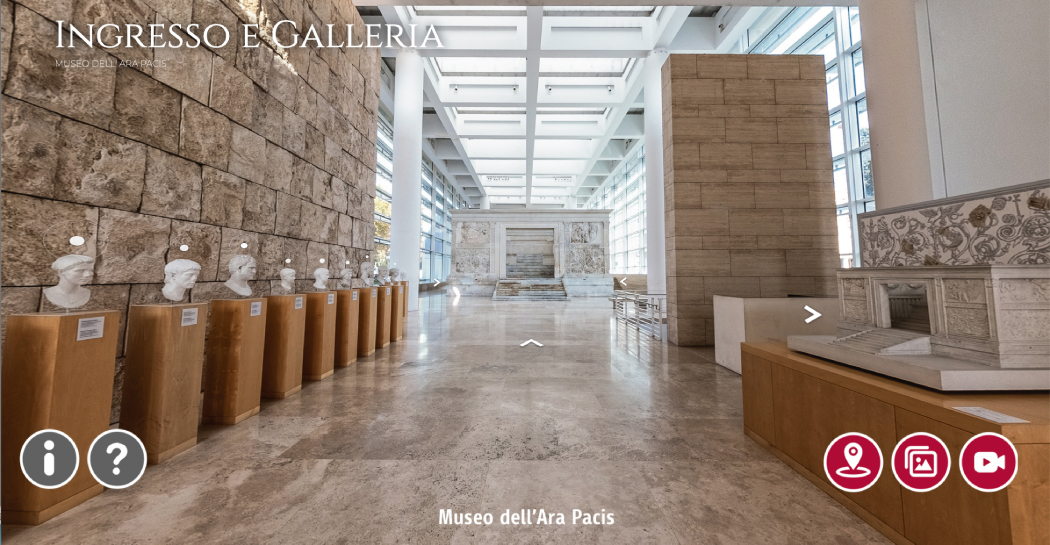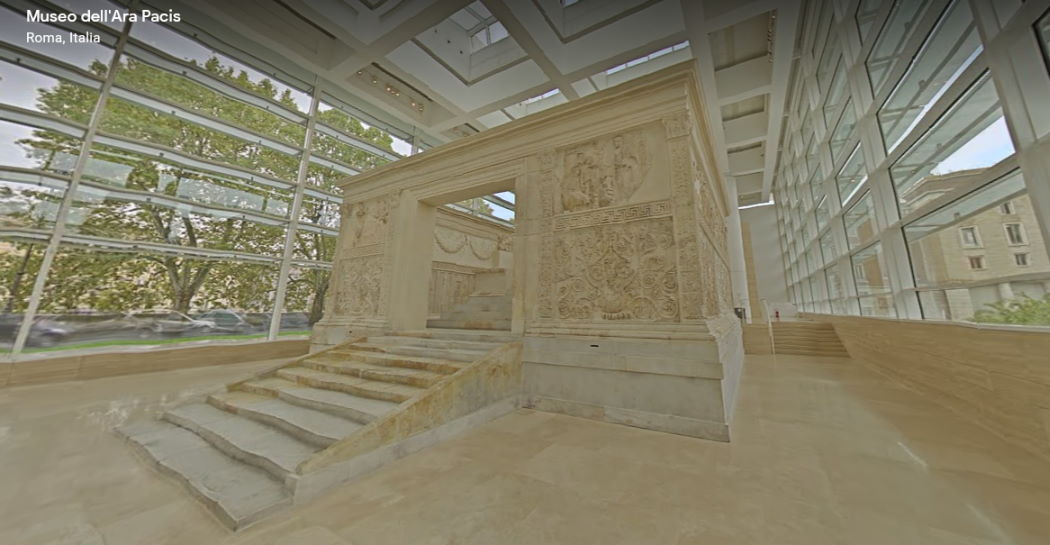Editorial
The Ara Pacis has been restored to the public after a long period of inaccessibility, while vital works were carried out to create conditions suitable for conserving the monument over a long period.
An study done in the Nineties showed the altar to be in such an alarming condition that the Municipal Administration decided to undertake very significant changes and to substitute the container, which had been constructed from an design by Morpurgo in 1938 and was proving entirely inadequate to protect the most precious monument of the Augustan age from dust, exhaust gases, vibrations, changes in temperature and humidity, with a museum complex built in accordance with the most up to date conservation criteria.

The museum space was designed by the architectural studio of the American architect Richard Meier. It modulates around the contrast of light and shade: the first two parts of the building, particularly, are governed by this concept: visitors pass through the access gallery, an area in shadow, to reach the central pavilion which holds the Ara Pacis in full natural light filtered through 500 square metres of crystal panels. This expanse creates an uninterrupted continuity with the outside world, and also helps to create the silence necessary to enjoy the monument in full. In the tranquillity of the acoustic isolation, it is possible to appreciate the calm rhythms of the decorative motifs; to attend to the procession passing along the sides of the enclosure of the Altar, made up of the massed priests of the Augustan age and of members of the imperial family, guided by Augustus himself; to revisit the founding myths of Rome and the Augustan glory that brought the empire the enjoyment of such contented times that the period came to be called the Age of Gold.






































